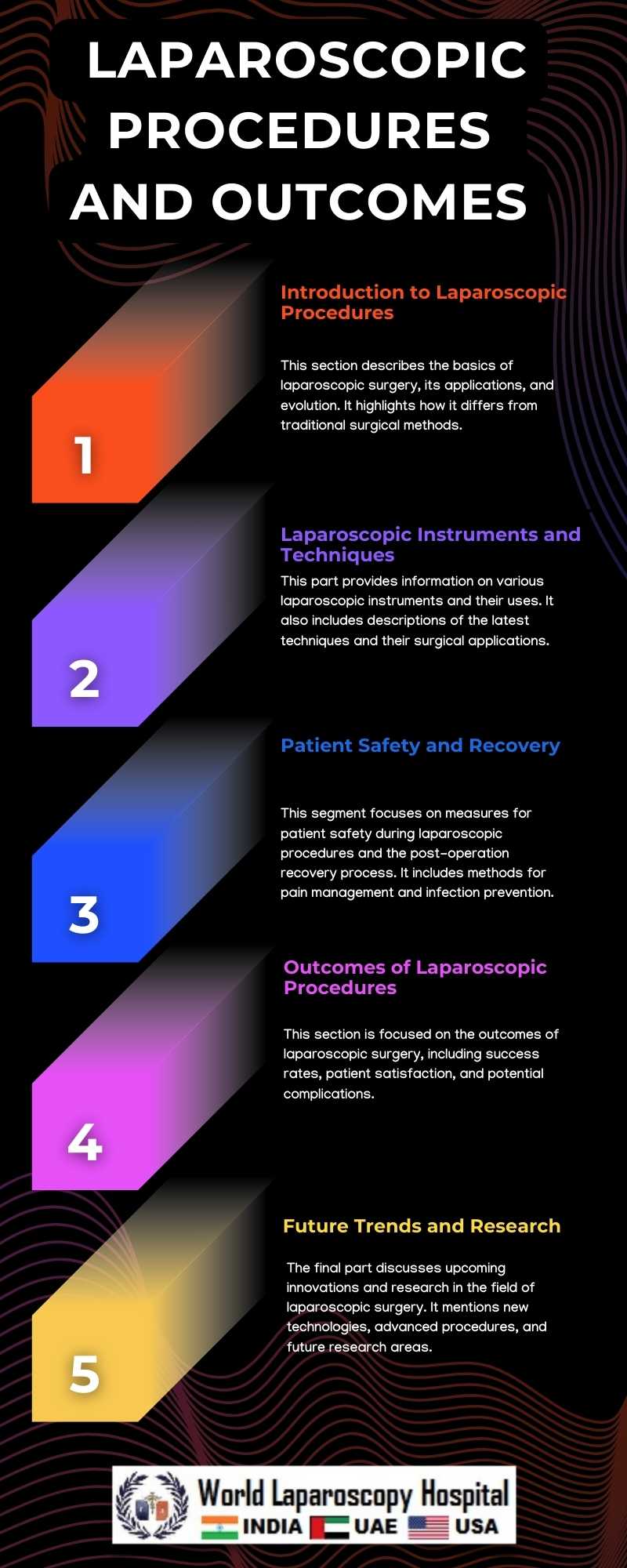Case Studies: Complex Laparoscopic Procedures and Outcomes
Introduction
- Overview of Laparoscopic Surgery: Briefly introduce laparoscopic surgery as a minimally invasive technique that has transformed surgical procedures.
- Importance of Case Studies: Explain how case studies are crucial in understanding the real-world applications, challenges, and outcomes of complex laparoscopic procedures.
Advancements in Laparoscopic Techniques
- Technological Innovations: Discuss the technological advancements that have enabled more complex procedures to be performed laparoscopically.
- Skill Development: Talk about the training and skill enhancement required for surgeons to perform these advanced procedures.

Case Study Analysis
1. Case Study 1: Present a complex case, detailing the patient's condition, the laparoscopic procedure performed, and the challenges faced.
- Procedure and Technique: Describe the specific laparoscopic technique used.
- Challenges and Solutions: Highlight any intraoperative challenges and how they were addressed.
- Outcome: Discuss the postoperative outcome and patient recovery.
2. Case Study 2: Follow the same structure as Case Study 1, with a different procedure and patient scenario.
Comparative Analysis
- Comparison of Outcomes: Analyze and compare the outcomes of the presented case studies.
- Learning Points: Discuss what can be learned from these cases in terms of surgical technique, patient care, and outcome optimization.
Challenges in Complex Laparoscopic Procedures
- Intraoperative Complications: Discuss common complications in complex laparoscopic surgeries and how they are managed.
- Patient Selection: Delve into the importance of appropriate patient selection for these procedures.
- Technological Limitations: Address any limitations of current technology in performing certain procedures.
Future Perspectives
- Innovations on the Horizon: Explore upcoming technological advancements and their potential impact on complex laparoscopic surgeries.
- Training and Education: Discuss the importance of continuous learning and training for surgeons in mastering these advanced techniques.
Conclusion
- Summary of Key Points: Recap the main points discussed in the essay.
- Final Thoughts: Reflect on the future of laparoscopic surgery and its role in improving patient outcomes.
References
- Include a list of academic and medical references used in the essay.
This essay structure provides a comprehensive overview of complex laparoscopic procedures through case studies, while also discussing the broader context in which these surgeries are performed. It combines technical details with practical insights, offering a well-rounded perspective on this important aspect of modern surgery.
- Overview of Laparoscopic Surgery: Briefly introduce laparoscopic surgery as a minimally invasive technique that has transformed surgical procedures.
- Importance of Case Studies: Explain how case studies are crucial in understanding the real-world applications, challenges, and outcomes of complex laparoscopic procedures.
Advancements in Laparoscopic Techniques
- Technological Innovations: Discuss the technological advancements that have enabled more complex procedures to be performed laparoscopically.
- Skill Development: Talk about the training and skill enhancement required for surgeons to perform these advanced procedures.

Case Study Analysis
1. Case Study 1: Present a complex case, detailing the patient's condition, the laparoscopic procedure performed, and the challenges faced.
- Procedure and Technique: Describe the specific laparoscopic technique used.
- Challenges and Solutions: Highlight any intraoperative challenges and how they were addressed.
- Outcome: Discuss the postoperative outcome and patient recovery.
2. Case Study 2: Follow the same structure as Case Study 1, with a different procedure and patient scenario.
Comparative Analysis
- Comparison of Outcomes: Analyze and compare the outcomes of the presented case studies.
- Learning Points: Discuss what can be learned from these cases in terms of surgical technique, patient care, and outcome optimization.
Challenges in Complex Laparoscopic Procedures
- Intraoperative Complications: Discuss common complications in complex laparoscopic surgeries and how they are managed.
- Patient Selection: Delve into the importance of appropriate patient selection for these procedures.
- Technological Limitations: Address any limitations of current technology in performing certain procedures.
Future Perspectives
- Innovations on the Horizon: Explore upcoming technological advancements and their potential impact on complex laparoscopic surgeries.
- Training and Education: Discuss the importance of continuous learning and training for surgeons in mastering these advanced techniques.
Conclusion
- Summary of Key Points: Recap the main points discussed in the essay.
- Final Thoughts: Reflect on the future of laparoscopic surgery and its role in improving patient outcomes.
References
- Include a list of academic and medical references used in the essay.
This essay structure provides a comprehensive overview of complex laparoscopic procedures through case studies, while also discussing the broader context in which these surgeries are performed. It combines technical details with practical insights, offering a well-rounded perspective on this important aspect of modern surgery.
2 COMMENTS
Dr. Yashraj K
#1
Jan 2nd, 2024 7:24 am
This essay structure adeptly presents complex laparoscopic procedures through insightful case studies, enriching the discussion with a broader contextual understanding. Balancing technical details and practical insights, it offers a well-rounded perspective on this crucial aspect of modern surgery.
Dr. Rahul Choudhary
#2
Jan 4th, 2024 7:11 am
This essay delves into laparoscopic procedures through case studies, offering a comprehensive overview. It covers technical aspects and practical insights, providing a well-rounded perspective on modern surgery.
| Older Post | Home | Newer Post |

